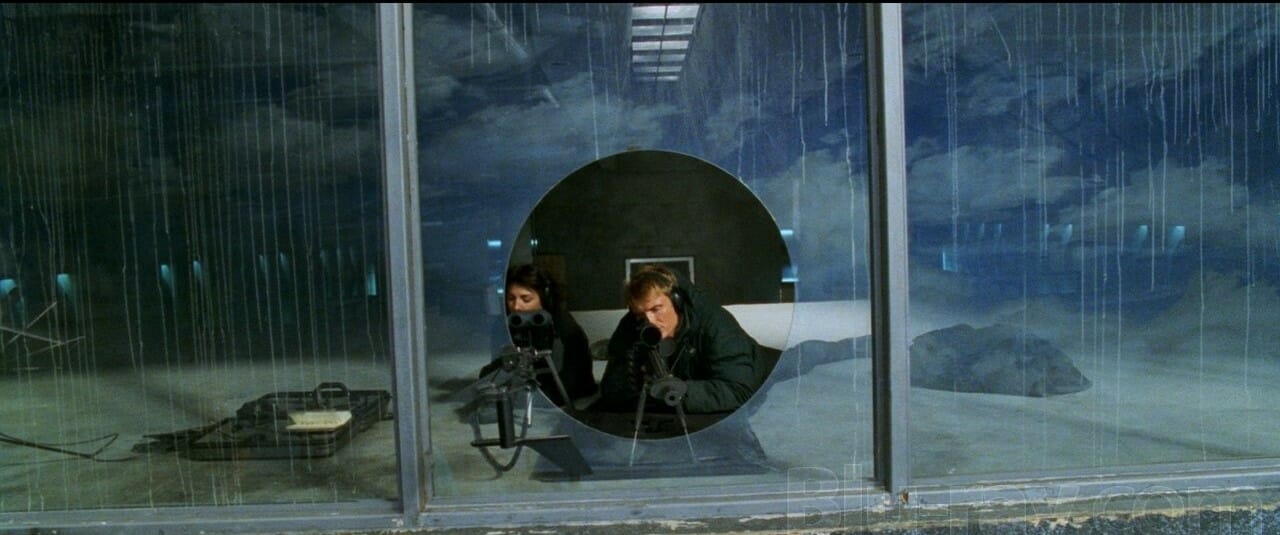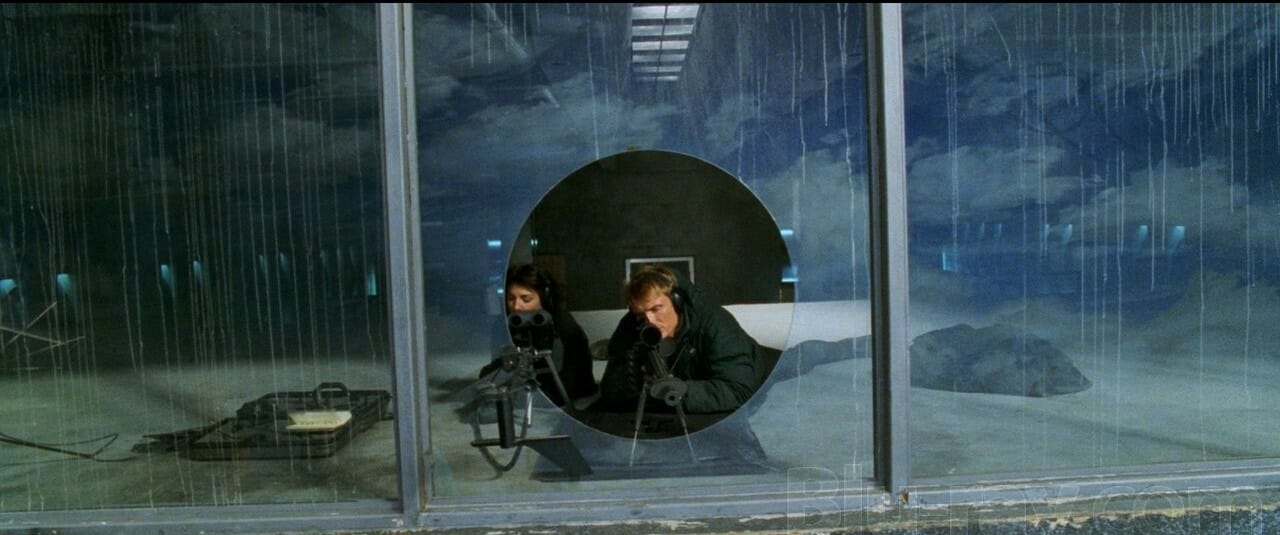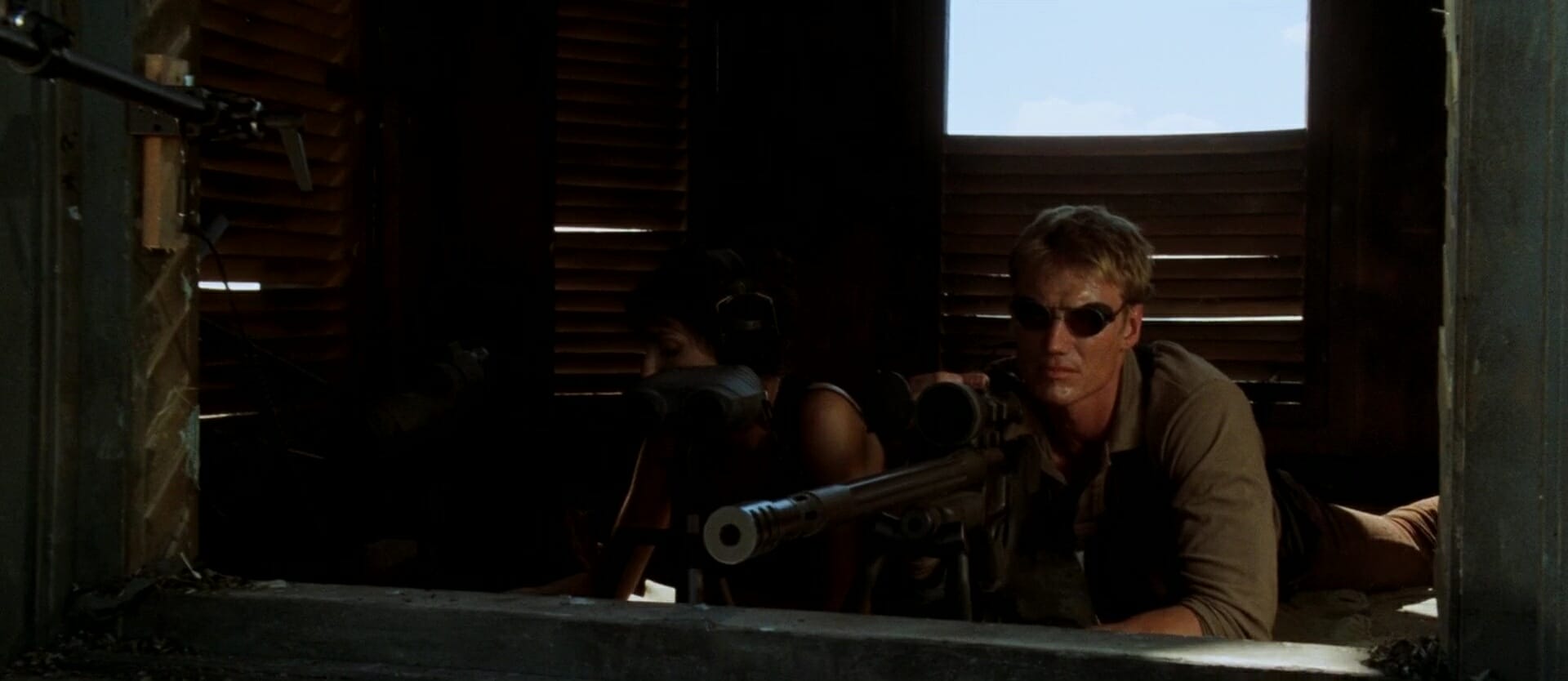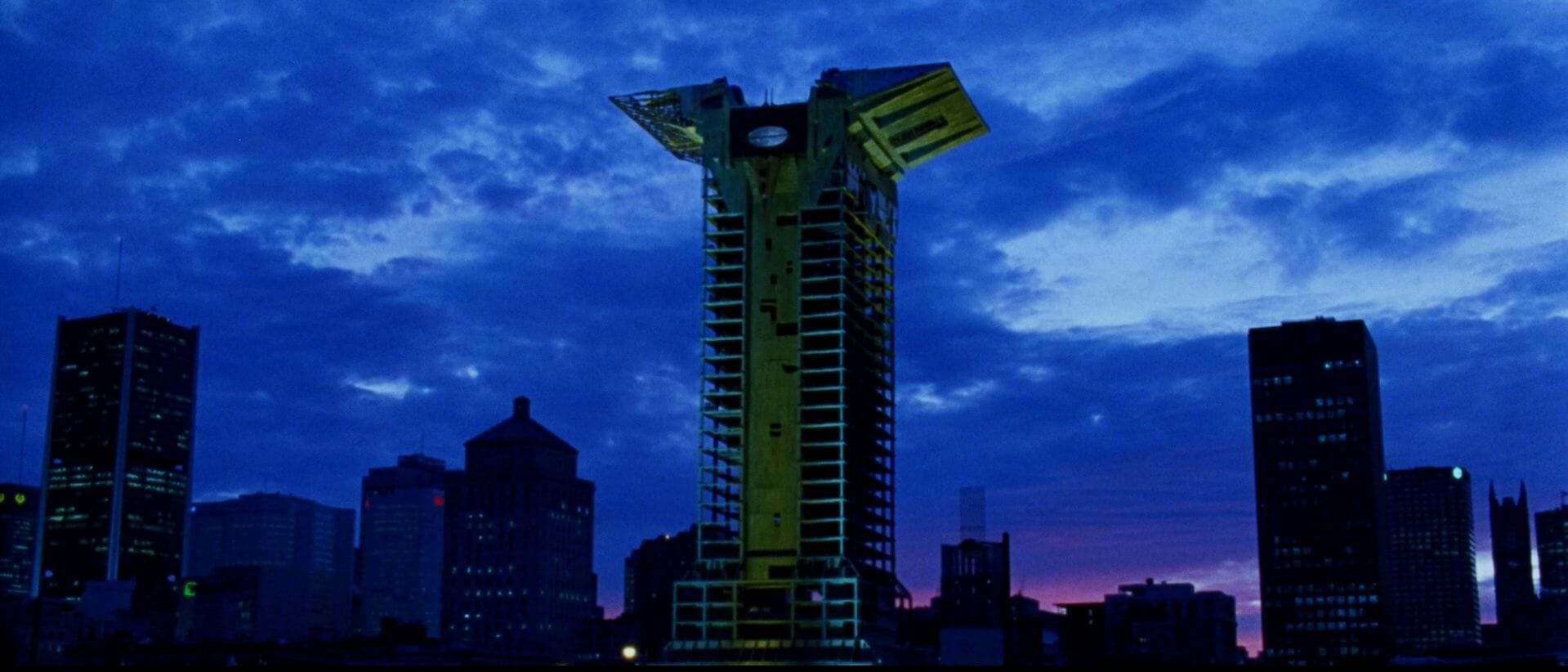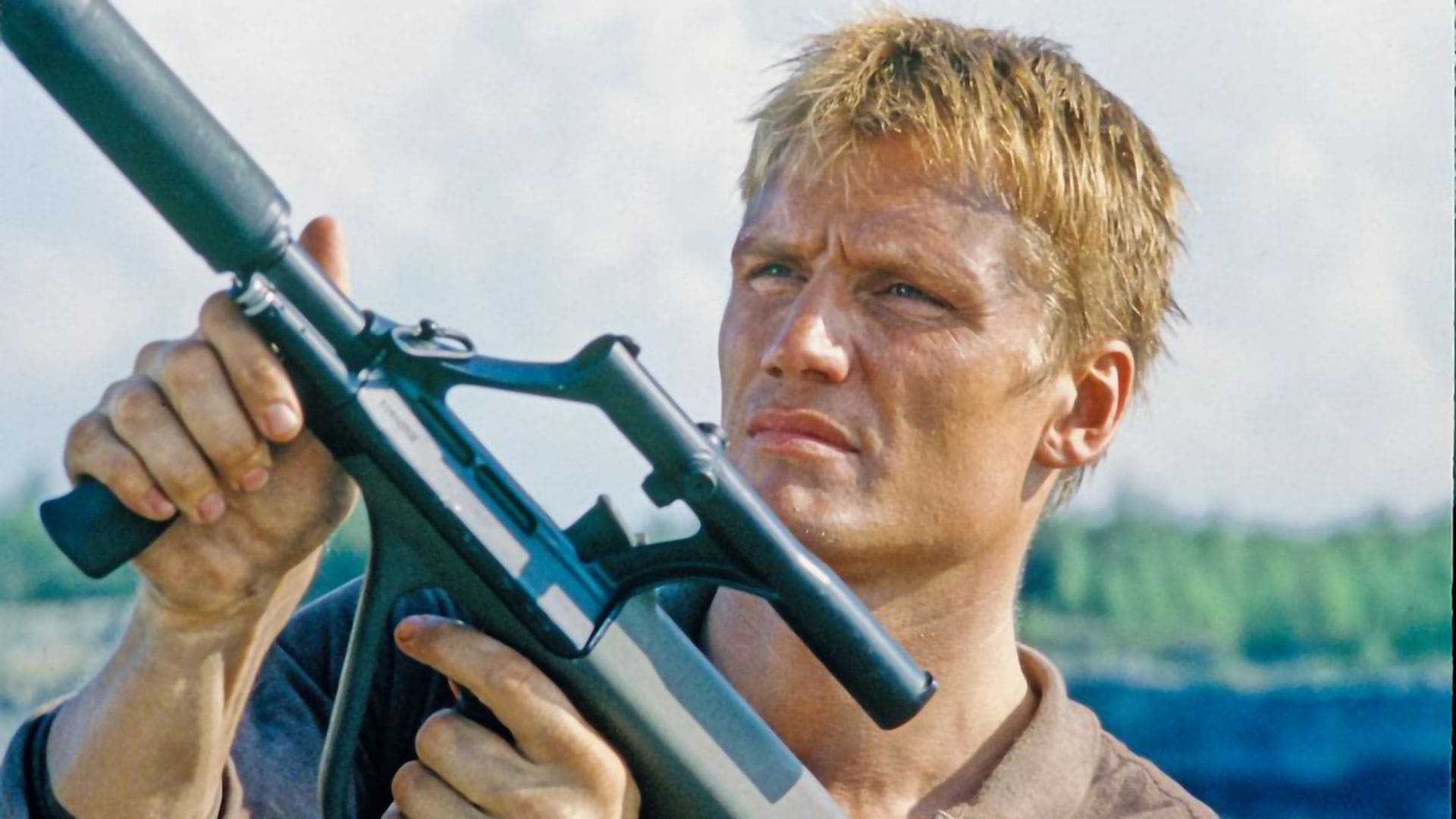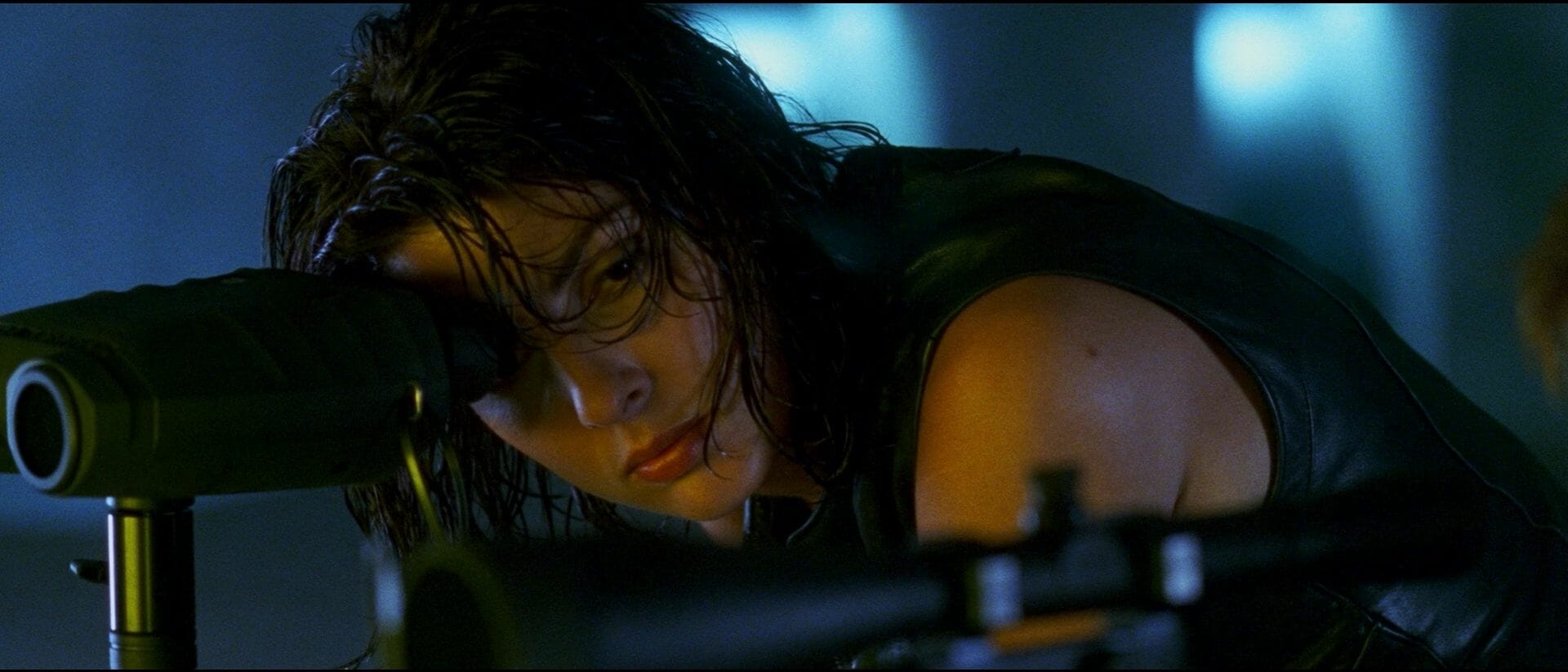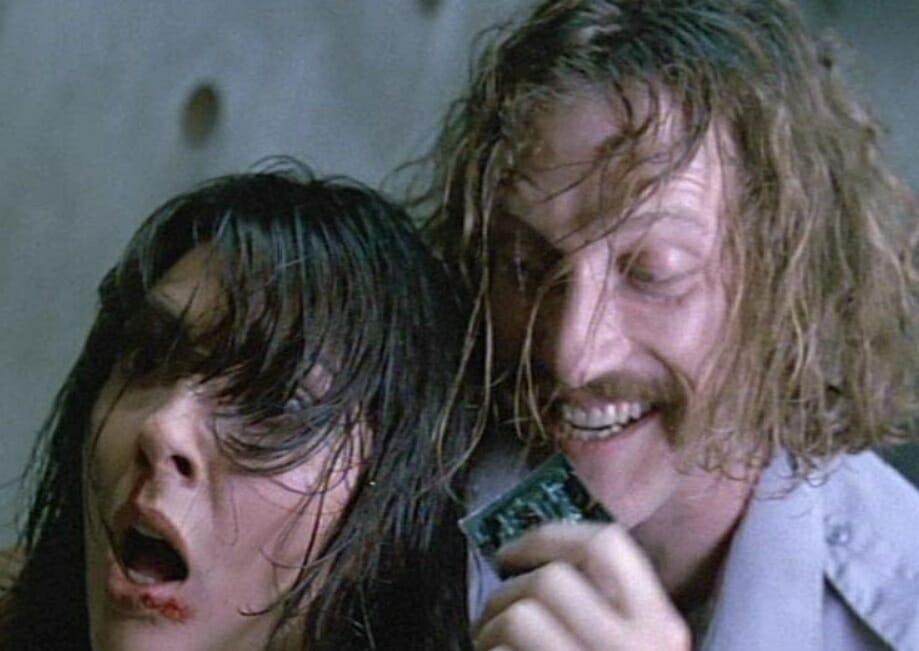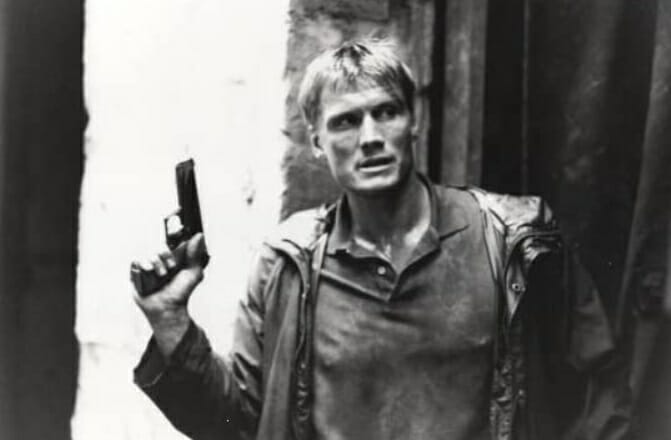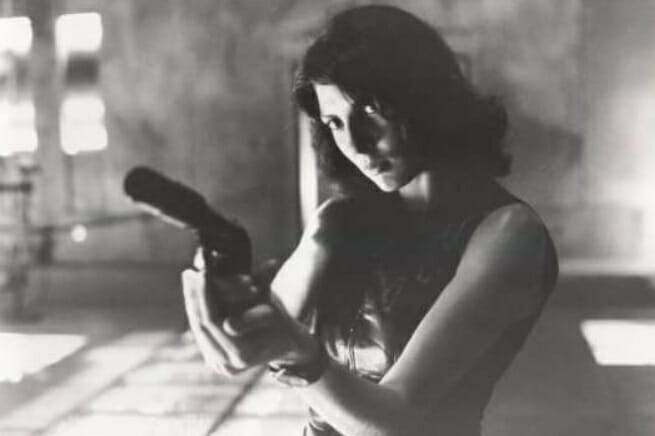What does it take for an audience to identify with an action movie hero? There are some generally accepted tricks of the trade that probably go back almost as far as cinema itself for making this happen. You can give the hero a family or a loved one to imperil, and who then requires rescuing. You can give them a bomb to defuse, or a treasure to find, or a bad guy to kill. In other words: give the hero a job to do, and if you do your own right, the viewer will follow along with you. Silent Trigger, the undervalued 1996 action film by director Russell Mulcahy, seems to recognize this basic truth, and in fact serves as an experiment in how little narrative tissue a film like this really needs in order to work.
The answer is, of course, very little, and at its best Silent Trigger feels like an exercise in paring the modern (circa 1996) action movie to its barest narrative essentials. Our two protagonists, played by the fashion-model-beautiful pairing of Dolph Lundgren and Gina Bellman, don’t even have names, instead identified by their professional designations as a team of top-level assassins: Shooter and Spotter. Their targets don’t seem to have names either, just faces, and a seasoned viewer of these types of films may be struck while watching Silent Trigger at the difference it makes when a movie doesn’t inundate you with names and exposition in an attempt to provide some sort of narrative justification for the action. This makes for an exciting movie experience but it also gives the story an interesting moral dimension: ultimately, it doesn’t matter to the disillusioned Shooter who his targets are or whether they might “deserve” the fates he deals them, an idea that is reflected in the conspicuous absence of any expository tissue in that vein at all.
Silent Trigger begins on a note that recalls Jean-Pierre Melville’s Le Samourai. Like in that French crime classic, we first see our hitman hero at rest, in apparent stasis in between jobs. Unlike Le Samourai, Mulcahy’s visual style makes this look like a music video or fashion photoshoot, a contrast that’s sustained throughout the movie and helps lend it its unique energy. In another motif that recurs throughout, Shooter flashes back to an earlier job, somewhere in eastern Europe, where he and Spotter have been assigned to eliminate an apparently quite popular local politician. Shooter, in direct opposition to the species-being of his only identity within the film, refuses to shoot, and Spotter is directed by the pair’s ruthless and anonymous superior to eliminate him. For following his conscience, Shooter is handed a death sentence by the mysterious (and, naturally, unnamed) organization that employs him.
Shooter doesn’t just survive this botched assassination but somewhat mysteriously appears to be reinstated by his employers, who assign him to an uncompleted skyscraper to wait for his next target. It’s a cliché when writing about films to call a particularly memorable location or set another character in the movie, but the building in which the bulk of Silent Trigger is set qualifies regardless. Underneath the discarded tarps and decaying scaffolding the structure has an art deco visual style that, again, reflects a sense of stripped down elegance. But surrounding the building, in a touch of pure gothic excess, is a powerful thunderstorm like something out of a Universal horror movie. The building also contains our two other main characters, and in an unusual touch (for this movie anyway) one of them actually gets a name: O’Hara, an unhinged security guard who acts as a cocaine-addled foil to his by-the-book uniformed partner before mutating into a truly deranged and sexually violent supervillain with a spider fixation, like BTK meeting the Red Dragon. O’Hara, played by Christopher Heyerdahl, gives the movie its second burst of horror movie energy, and his performance is both ridiculous and scary.
Shooter is eventually joined by, you guessed it, Spotter, and the two reunite at the top of the skyscraper to wait, and wait, and wait for their target to show up. If it weren’t for the regular flashbacks fleshing out what happened between the two after their last job went wrong, Silent Trigger would be an even more unusual action movie. The flashbacks beef up the body count but I can’t help but wonder what the movie would be like without them — my guess it would feel even more like a piece of experimental theater that accidentally became an action movie, four characters trapped in a violent purgatory for an entire sleepless night.
The action that unfolds across that long night is, in typical Mulcahy fashion, exciting and memorably staged across stairwells, elevator shafts, even at one particularly striking point a rolling platform under the floor. Contrast the action in the building with the more traditional action movie antics of the flashbacks, adequate but familiar and lacking the spirit and flair of the action in the “present.”
Shooter and Spotter, as far as the audience is concerned, have no names and no personal lives either. With one possible exception: their relationship to one another. But the “love story,” such as it is, and much like the primary spine of the movie’s plot, unfolds with the least required ingredients. This is the kind of movie where His idea of a romantic gesture is to shoot a fire hydrant with a sniper rifle and douse Her with the resultant water spray (and the really crazy thing is, after having seen this movie twice now, it’s starting to seem pretty romantic to me, too).
Silent Trigger was effectively a direct-to-video feature back in 1996, and it’s since become only easier to ignore, coming at the beginning of what’s generally accepted as both Mulcahy’s and Lundgren’s creative decline after their glory days in the 80s. But this is the same Mulcahy who made The Highlander, Ricochet, and The Shadow, and it’s hard to imagine any other action star of his era filling the role of Shooter as well as Lundgren does here. He brings just the right amount of what I’ll call a charismatic cipher quality to the character, and his chemistry with Bellman — who’s more than able to share the screen with him, a necessity given how few speaking parts there are in this — is a reward to repeat viewers.
There have been plenty of films about assassins over the years, probably because their very nature makes for an easy and economical way to begin an exciting story. Silent Trigger takes the tropes of these films and boils them down to their purest elements, and then hides the result under the facade of a typical direct-to-video actioner. Pierce that external armor, though, and a true connoisseur can find unexpected fulfillment inside. Just consider me your Spotter.
